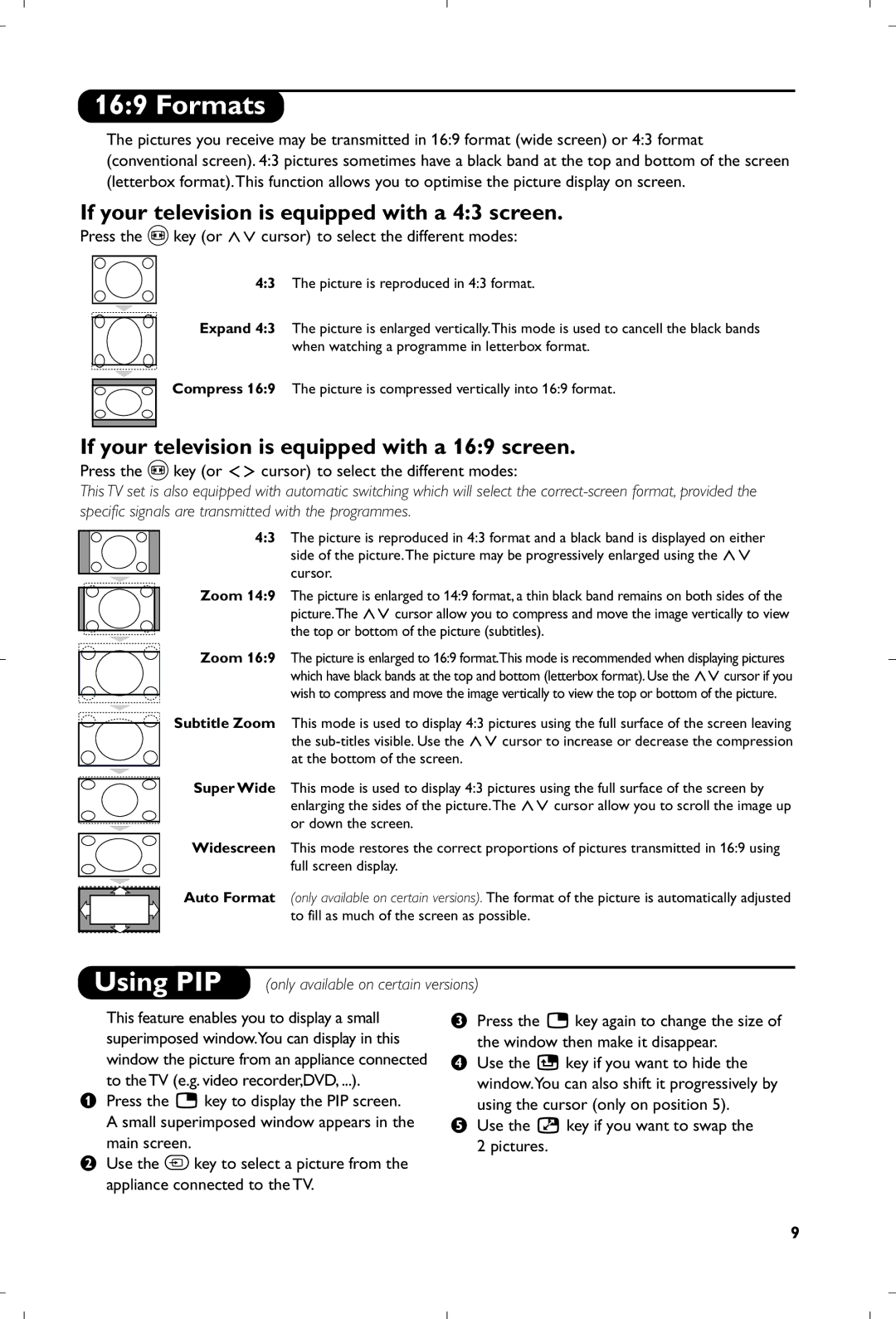
16:9 Formats
The pictures you receive may be transmitted in 16:9 format (wide screen) or 4:3 format (conventional screen). 4:3 pictures sometimes have a black band at the top and bottom of the screen (letterbox format).This function allows you to optimise the picture display on screen.
If your television is equipped with a 4:3 screen.
Press the p key (or <> cursor) to select the different modes:
4:3 The picture is reproduced in 4:3 format.
Expand 4:3 The picture is enlarged vertically.This mode is used to cancell the black bands when watching a programme in letterbox format.
Compress 16:9 The picture is compressed vertically into 16:9 format.
If your television is equipped with a 16:9 screen.
Press the p key (or ≤≥ cursor) to select the different modes:
This TV set is also equipped with automatic switching which will select the
4:3 The picture is reproduced in 4:3 format and a black band is displayed on either side of the picture.The picture may be progressively enlarged using the <> cursor.
Zoom 14:9 The picture is enlarged to 14:9 format, a thin black band remains on both sides of the picture.The <> cursor allow you to compress and move the image vertically to view the top or bottom of the picture (subtitles).
Zoom 16:9 The picture is enlarged to 16:9 format.This mode is recommended when displaying pictures which have black bands at the top and bottom (letterbox format). Use the <>cursor if you wish to compress and move the image vertically to view the top or bottom of the picture.
Subtitle Zoom This mode is used to display 4:3 pictures using the full surface of the screen leaving the
Super Wide This mode is used to display 4:3 pictures using the full surface of the screen by enlarging the sides of the picture.The <> cursor allow you to scroll the image up or down the screen.
Widescreen This mode restores the correct proportions of pictures transmitted in 16:9 using full screen display.
Auto Format (only available on certain versions). The format of the picture is automatically adjusted to fill as much of the screen as possible.
Using PIP (only available on certain versions)
This feature enables you to display a small superimposed window.You can display in this window the picture from an appliance connected to the TV (e.g. video recorder,DVD, ...).
&Press the œ key to display the PIP screen. A small superimposed window appears in the main screen.
éUse the µ key to select a picture from the appliance connected to the TV.
“Press the œ key again to change the size of
the window then make it disappear.
‘Use the π key if you want to hide the window.You can also shift it progressively by using the cursor (only on position 5).
(Use the ‡ key if you want to swap the 2 pictures.
9
